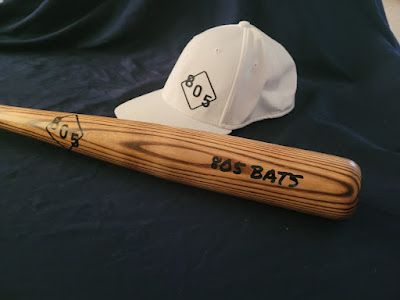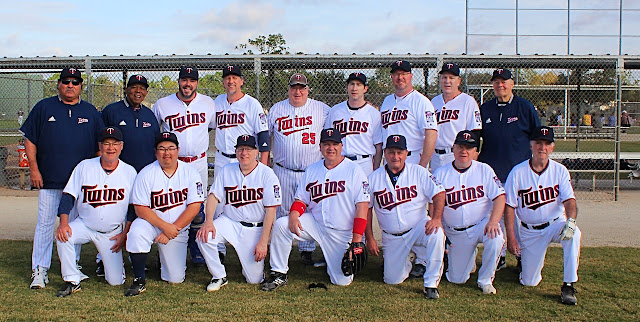Bat making the 805 way

How an 805 Bat comes to life.
Wood baseball bats are nothing new. They've been around since before baseball was a sanctioned sport. While they have changed greatly since the early days of the game, the basic shape of the bat has been codified since the first part of the 20th century. Depending on the league, the rules for size, and weight differ. In the 60s and 70s, metal bats came on the scene, gaining popularity in youth, high school and college leagues. Composite bats followed a couple decades later.
Since the early 2000s, many rec and adult baseball leagues have been turning back to wood and wood composites. There is a purity to the game that comes from swinging wood. With the smaller sweet spot, hits must be earned. Bats are harder to alter. Games are typically safer. And because wood bats most often break when bad contact is made, the hitter is driven to learn proper mechanics and improve hand/eye coordination in order to make solid contact on the barrel for better hits and bat preservation.
There are a multitude of bat companies across the country. There are the giants like Louisville Slugger, Marucci, and Rawlings. There are companies with solid and growing followings, like Dovetail Bats (DTB), Birdman Bats and Sam Bat. And there are many smaller bat companies carving out their place and growing. I'm grateful for these companies. I'm a baseball lover. I'm a bat lover.
You may think it's odd that the craftsman behind 805 Bats is praising other bat companies. But I do. Those companies paved the way. They inspire me. They've put the hard work into reigniting the desire for swinging wood again into the baseball public's mind. I've owned, and still have, many of their bats. I don't believe in criticizing and tearing down others as a way to build up myself or the 805 Bats brand. It's not who I am as a person or a bat maker.
I also don't consider them as my competitors, at least not directly. I operate with a different mindset....
If I tried to be Louisville Slugger, I wouldn't be 805 Bats.
Most of these companies create great bats. They have great, established turning models. A turning model is the profile of the bat. For example, the 243 turning model is a large barrel bat with a medium-thin handle and a partly tapered lower handle going into a standard knob. It has an endloaded swing weight. Most bat makers have some variation of this model. Its a popular model.. I own a couple myself. Great model.
These companies have turning models like these already made or ready to make for you on demand. It's their product, what they do. They try to help you find the product of theirs that they have and sell it to you. Nothing wrong with that. Its how most businesses operate.
But 805 Bats takes a different approach. Instead of trying to sell you a product already made or designed, I ask what you want in a bat and create it for you from scratch. If you want an established model, I can do that. But what 805 bats does that is harder for larger companies to do with individuals, is to collaborate, 1 on 1, to create a custom turning model for you, the hitter. One where the entire bat is custom crafted to the specs best suited for you. Every hitter is different. Every bat should be made to fit your swing. And I want to do this at a cost that is no more, and often lower, than top end bats you can buy off the rack at a store.
It's like a suit. You can go into a store and buy a suit off the rack. It may fit well, but was made for a general size to fit many different people. You may like it but the arms might be a bit long. Or the inseam a bit short. It works, it's a great looking outfit. But what if you went to a tailor, and had a suit made and fitted perfectly for you? That is what 805 Bats does with bats.
Making an 805 Bat
It starts with you.
The first step is discussing what you want in a bat. Different hitters like different characteristics. Barrel type, taper, handle, knob, cupping, length, weight, swing weight....there are many parts of the bat that can be customized to suit. You may know exactly what you want or you might want options based on your swing type. The initial conversation is where the bat is conceived.
Choosing the wood.
The 3 main choices in bat wood are Maple, Birch and Ash.
Maple is the most common choice today for wood bats. It's an open grain wood that's very hard, with little give (or flex). It's the wood that was used to set the official single season homerun record. After that, pros and amateurs alike, switched to it.
Birch is the fastest growing choice for wood. An open grain wood like maple, it's not quite as hard but still carries plenty of pop. It's the wood used to win the last two homerun derbys. It has a bit more forgiveness on a miss-hit ball and is easier on the hands. It compresses with use and the sweet spot will become harder with use.
Ash is the old friend in baseball bats. For almost a century is was the wood of choice for bats. It is a closed grain wood, which is what makes the grain so distinct. Carrying plenty of pop with a lot of flex, this is the wood used by most of the all time great hitters in baseball history.
The best wood for bats comes from colder climates. The colder weather creates denser wood and straighter grain. The billets for 805 bats are sourced from the northeastern and northwestern parts of the US. When choosing a billet to make a bat, starting with the right weight for the model to be made is important. Making sure the grain is straight, especially in the handle, is crucial to ensure the most durability of the bat.
Cutting the bat
The lathe I use is as basic as it gets. After choosing the billet, I secure it between centers and turn it on. It spins the wood. That's all it does. There is no CNC to aid in the process. Once the wood is spinning I use a roughing gouge to shave down the spinning wood by hand so that it is rounded. This is important because billets are rarely perfectly round and balanced to start, as they are initially milled before the drying process.
Once the rounding is complete, the billet is then marked in 1-2 inch increments. These are the points where the depth of cuts will be measured along the way. Next, I start at the barrel end of the bat. Using a spindle gouge, skew and parting tool (woodturning hand tools), I slowly start to carve out the shape of the bat, inch by inch. Once I pass the center point of the bat, I add a steady rest tool to the lathe. Like the name indicates, it has the wood resting on it and keeps it steady as it spins to reduce the flex in the wood. After the handle is done I cut the knob to specs then move back to the end of the barrel to round the edge. (Fun fact: by rule a bat can not have a squared off edge at the end of the barrel. The edge must be at least minimally rounded.)
After this initial cut, the roughed bat is weighed to make sure its in desired range. Then it is put back on the lathe for initial sanding. With the lathe spinning, the bat is sanded until it it perfectly smooth. Then it is weighed again. Next is hand sanding, going long ways along the grain, going through different courses of sanding paper until the bat is smooth as glass. It is weighed again.
If all checks out at this point, the end of wood left beyond the barrel is removed. The drive center on the lathe is replaced by a chuck and the bat is placed back on the lathe, with the steady rest at the end of the barrel, the cupping is hand cut using a small spindle gouge and small skew. Once finished being cupped, the bat is re-weighed, again, and then the wood beyond the knob is removed (except if it will have a flame torched finish). It's hand sanded one more time and then weighed to get a final weight.
The bat is now cut with the profile, length and weigh desired. The time to custom handturn the bat is 2-4 hours depending on profile type and desired specs. For perspective, a mass produced bat, cut on a cnc lathe, takes about 5-15 mins depending on the machine. Handturning is a lot of work but is a labor of love. And the best way to create a fully custom piece.
On to finishing and labeling
The look of the bat is customized to fit your taste as well. Whether you like the classic natural wood look, a stain that enhances the grain or a paint finish featuring your favorite colors the possibilities are numerous. A flame torched finish is hot and popular. Maybe pinstripes or hydrodip are what you want to have the flashiest bat on the field. Your bat should fit your personality as well.
Labeling is done using premium vinyl with plenty of color choices. The options for personalization make choosing your labeling a fun activity.
After color and labeling, the bat is given a final clearcoat finish to preserve its brilliance.
Getting a custom bat from 805 Bats
Getting started on a bat is pretty easy. You can contact me through 805 Bats on Facebook, @805bats on Instagram or email directly at 805bats@gmail.com. We'll discuss what you are looking for in a bat.
Feel free also to contact me if you are just in the mood to talk baseball. I never get tired of the game or talking bats.
⚾️⚾️⚾️
Play ball









I recently purchased an 805 Bat, and found the process really user-friendly. Despite my inexperience, Ron was super-helpful in helping me make an informed decision about the bat I wanted. The bat is a Christmas present for one of my boys, and I know he's going to love it.
ReplyDelete